Flat roofs are an increasingly popular choice for modern buildings. They are cost-effective and provide additional space for building owners. However, flat roofs also come with their own set of challenges, including potential leaks and damage. In this article, we will provide an overview of flat roofs, explain the common causes of leaks, and offer step-by step instructions on how to repair flat roof leaks and patch a flat roof. Whether you are a homeowner or a professional contractor, this guide will help you address any issues with your flat roof.
Understanding Leaks in Flat Roofs
Flat roofs are a common feature in modern buildings, offering a sleek and minimalist design. However, leaks in flat roofs can be problematic and need to be addressed at the earliest. Identifying and understanding the source of the leak is the first step in fixing the issue.
There are various reasons why leaks in flat roofs can arise, including:
- age of the roof;
- poor water drainage;
- substandard installation;
- improperly sealed collars flashing;
- damage in the form of tears or punctures;
- extreme weather.
It is critical to identify the source of the leak as this helps in not only repairing the damage but also prevents the problem from happening again.
Indications of a flat roof leak include water stains or dampness on the ceiling, as well as puddles on the floor or water dripping down from the ceiling. Such signs can serve as key indicators to locate the source of the leak and assess the extent of the damage.
Repairing leaks in flat roofs can be challenging and requires appropriate knowledge and tools. Minor leaks can be repaired using simple tools such as a utility knife, a pair of scissors, and lap sealant. For more extensive damage, professional help may be required.
It is essential to be proactive in identifying and repairing leaks in flat roofs. Regular roof inspections and maintenance can help in identifying and fixing minor leaks before they turn into significant problems. Some measures that can be taken to prevent leaks in flat roofs include installing reflective coating to minimize the impact of natural disasters and water pooling.
Leaks in flat roofs can cause significant damage if left unaddressed. Identifying the source of the leak and addressing it promptly can prevent further harm from occurring. Regular inspections and maintenance can help prevent leaks from occurring in the first place.
Diagnosing the Source of the Leak
Diagnosing the source of a leaking flat roof is crucial in determining the extent of the damage and in effectively repairing the problem. In this part of the article, we will provide you with a comprehensive guide to diagnosing the source of a leak in your flat roof and offer some tips on how to address the issue effectively.
Assessing Visible Damage
Like any other roof, flat roofs are also prone to damage. One of the most important steps in fixing a flat roof is assessing the visible damage. Here are some of the common types of visible damage that may occur in a flat roof:
- Blisters: Blisters are raised areas on the roof surface caused by trapped air or moisture. Small blisters may not be a major concern but larger ones can lead to the roof surface deteriorating over time.
- Cracks: Cracks can occur due to weather conditions or foot traffic on the roof. They can allow water to penetrate the roof surface and cause damage. Small cracks can be repaired with patching materials while larger ones may require professional help.
- Crocodiles: Crocodiles are a series of small cracks that resemble the skin of a crocodile. These cracks can occur due to aging and weathering of the roof surface.
- Punctures: Punctures can occur due to fallen branches, foot traffic, or other sharp objects. They can lead to water damage if not fixed promptly.
- Tears: Tears can occur due to wind damage or heavy foot traffic. They can be repaired with patching materials but larger tears may require professional help.
It is essential to check for these visible signs of damage regularly to prevent them from turning into bigger issues. Small areas of damage can quickly become larger and cause extensive damage to the entire roof. Immediate action must be taken to repair the damage to prevent any water or moisture from penetrating and causing more significant damage. Neglecting minor damages to fix at a later stage can result in costly repairs and even complete replacement.
Investigating Areas Nearby the Leak
If you notice a flat roof leaking, it is essential to investigate nearby areas to identify the cause of the leakage. Ignoring the problem will only make it worse and may require extensive repairs or even a roof replacement down the line. Here’s how you can investigate the areas nearby the leak:
- Examine the Layers of Materials: Start by examining the layers of materials on the roof surface. This includes the roof deck and adhesive used to hold the layers together. Look for any damage or signs of wear and tear. Usually, problems with the roof surface occur due to the aging of the materials or weather exposure, resulting in cracks or holes in the layers.
- Look for Damage to the Membrane: The membrane is the thin layer that covers the entire flat roof. It works as a waterproofing agent, preventing water from entering the building. Look for cracks, tears, or punctures on the membrane, as they can cause water infiltration. Certain materials such as modified bitumen offer superior resistance, while others can be more prone to damage.
- Inspect Tears and Punctures: Tears and punctures can occur due to foot traffic, fallen branches, or other debris. Check around the areas near the flashing of the roof, which are more susceptible to wear and tear due to its movements over time. Small punctures can be repaired using roofing materials like lap sealant and patches. Large punctures and tears may require professional help.
- Investigate Nearby Areas: If you cannot find any damage, check the areas that could cause water to pool nearby the leak. Factors such as clogged gutters, inadequate drainage, or poor sloping can lead to water accumulation, adding up to the pressure on the roof surface, and creating leaks. Also, inspect the surface nearby the roof, as any debris or small items may cause severe damage to the roof.
Careful inspection of the roof layers, membrane, and any tears or punctures can give you an idea of how to tackle the issue. Regular inspection of the flat roof and maintenance can also prevent leaks from happening in the first place.
Looking for Water Stains or Damage on the Ceiling Below the Roof
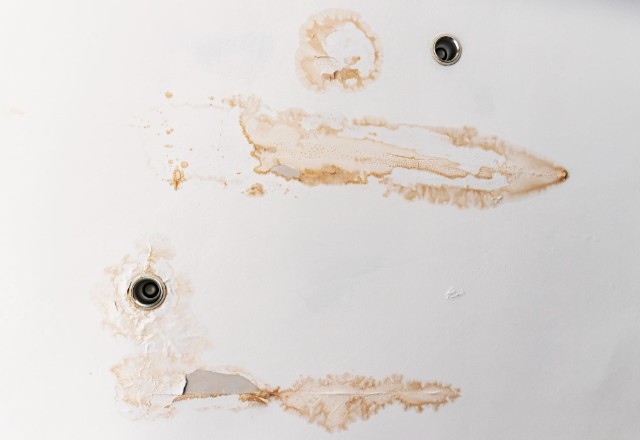
If you suspect that your flat roof is leaking, one way to confirm it is by checking for water stains or damage on the ceiling below. Follow these steps to determine if you have water damage:
- Look for water stains: The first sign of water damage is usually a yellow or brown stain on the ceiling. Start by checking around the damp spot found on the ceiling, as it’s likely to be the closest point to the roof leak. Check for any visible water stains, which can vary in size and shape, but are typically larger than the actual leak point.
- Inspect for visible damage: The ceiling may also show other visible signs of water damage, such as discoloration, peeling paint or warping. Check the surrounding area as well, as water can travel in unexpected ways before it becomes visible.
- Check for mold or mildew: If you suspect that water has pooled on the roof, the ceiling below may also have mold or mildew growth. This can be a health hazard and should be dealt with promptly. Look for dark spots and patches on the ceiling, as well as a musty smell which may be an indication of mold.
If you find any of these signs of water damage, it’s essential to determine the source of the leak and have it fixed as soon as possible. Leaving a leaking flat roof unattended can lead to more significant problems like rotting of the roof deck or even structural damage. Be sure to hire a professional roofer to inspect and fix your flat roof leak to ensure the problem is resolved correctly.
Identifying Signs of Deterioration on the Roof Deck
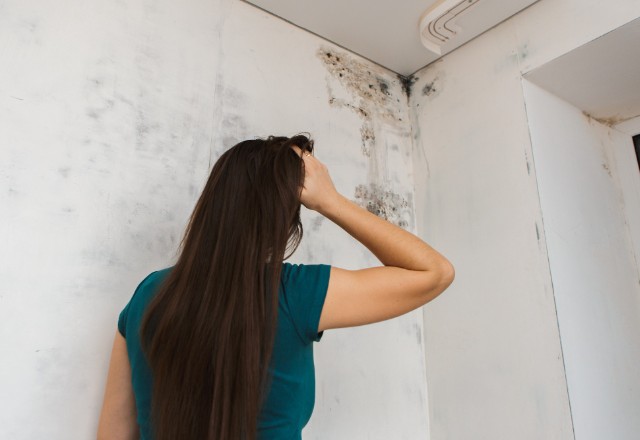
When it comes to flat roofs, the roof deck plays a crucial role in its overall condition and stability. Over time, the deck can begin to deteriorate, leading to leaks and potential structural issues. It’s important to keep an eye out for signs of deterioration to catch any problems early on. Here’s how to identify signs of deterioration on the roof deck:
- Check the roof deck condition: Head up to the roof and inspect the condition of the deck itself. Look for any cracks, warping, or other signs of damage. If the deck is made of wood, check for rot or decay. A deteriorating deck can compromise the entire roof structure, so it’s important to address any issues right away.
- Look for signs of moisture: Moisture is a common culprit of roof deck deterioration. Check the decking for any soft spots or signs of moisture. If the deck feels spongy or you notice any water stains, it might be time for repairs or a full replacement.
- To check for deteriorating roof deck, inspect the ceiling below for water damage. Dark brown patches on the ceiling may indicate seeping damp from a damaged flat roof. Concentric circle stains from dried up water in low spots on the roofing are also a warning sign.
- For a secure roof deck inspection, lay a board across the flat roof to distribute your weight and walk on. Avoid placing the board near an edge and mark areas that may be hard to see.
By regularly inspecting your flat roof and identifying signs of deterioration on the roof deck, you can prevent costly repairs and potential safety hazards. Don’t hesitate to contact a professional roofing contractor if you suspect any issues with your flat roof.
Scheduling a Professional Roof Inspection: Why It’s Important
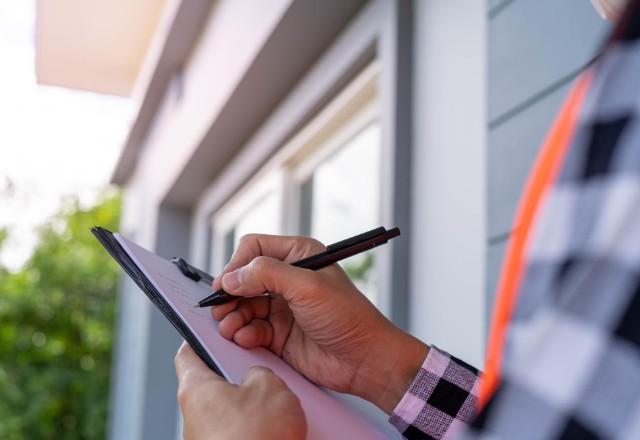
When you notice a leak in your flat roof, your first thought may be to climb up there with a utility knife and some roofing cement to patch the problem on your own. However, even if you plan to fix the leak yourself, it is crucial to have a trained professional assess the condition of your roof. Here’s why it’s important to schedule a professional roof inspection.
Detailed Understanding of the Problem
A professional roof inspection will give you a more detailed understanding of the scope of the problem. While you may be able to see that there is a leak, a professional roofer will be able to identify the exact location and extent of the damage. This information will help you to make a more informed decision about how to proceed with repairs.
Assessment of Individual Features
During a professional roof inspection, the roofer will also check for any individual features of your roof that may have contributed to the leak. This could include anything from clogged gutters to a deterioration of the flat roof material. By identifying the root cause of the issue, you can make sure that your repairs are effective and long-lasting.
Detection of Hidden Damage
Finally, a professional roof inspection will allow the roofer to check for any signs of decay or damage that you may not have noticed. Flat roofs are particularly prone to leaks and decay, and some damage may be hidden from view. A professional will inspect every inch of the roof and identify any areas that require attention.
Even if you plan to fix the leak in your flat roof yourself, it is important to schedule a professional inspection first. This will give you a more detailed understanding of the scope of the problem, the individual features of your roof that may have contributed to the leak, and any hidden damage that you may not have noticed. By addressing these issues with the help of a trained professional, you can ensure the long-term health of your flat roof.
Getting Prepared to Fix A Leaking Flat Roof
Fixing a leaking flat roof can be a daunting task, especially if you’re not familiar with the process. But before you climb up there with your tools and equipment, it is crucial to do some preliminary preparations. By taking the necessary steps to ensure your safety and the effectiveness of your repairs, you can save time, money, and unnecessary hassles.
Read on for some tips on how to prepare yourself for fixing a leaking flat roof.
Selecting and Purchasing Materials Needed to Repair A Flat Roof
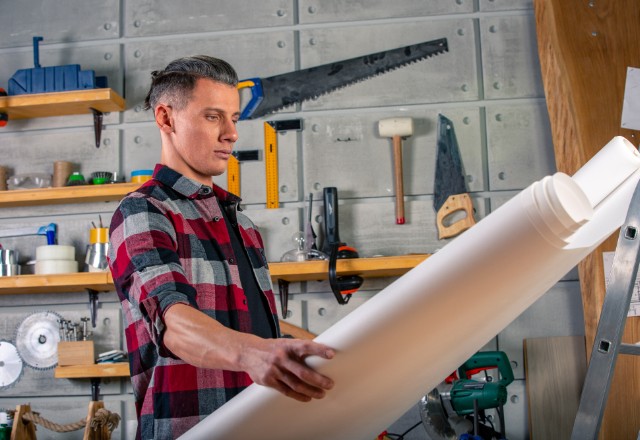
One of the most crucial steps in repairing a flat roof leak is selecting and purchasing the right materials. The materials you choose will depend on the type of roofing material your roof has. In this article, we will provide instructions on how to select and purchase materials needed to repair a flat roof.
If your flat roof is made of EPDM rubber, you must use a compatible repair product. EPDM is a popular roofing material, and it requires a specific type of flat roof repair material for proper sealing. Some common flat roof repair materials for EPDM membranes include lap sealant, roofing cement, and a patch material that is compatible with EPDM rubber.
When selecting and purchasing materials, it is recommended to consider getting additional insulation to prevent future leaks. Proper insulation will help maintain the temperature inside the building and keep the roof in good condition. Make sure you purchase enough materials to cover the damaged area effectively. Measure the area and purchase enough materials to cover it properly.
When shopping for the materials, consider the brand and quality of the products. Choosing high-quality materials from reputable brands will benefit you in the long run. The right products will last longer and perform better, saving you money on repairs in the future.
Be sure to evaluate your roofing material, consider materials that are compatible with your roof, purchase enough materials to cover the damaged area properly, and choose high-quality products from reputable brands. By following these instructions, you can select and purchase the right materials needed to repair your flat roof successfully.
Gather Appropriate Tools for Repairing a Flat Roof
Before you begin repairing a flat roof, it’s important to ensure that you have all the necessary tools and materials. This will not only save you time but also prevent you from having to run to the hardware store in the middle of the job. Here are some of the essential tools and equipment that you’ll need for flat roof repair:
- Roofing Cement: This is a crucial ingredient in repairing flat roofs and sealing leaks. It’s a thick, tar-like substance that is applied to the damaged area using a trowel or putty knife.
- Utility Knife: This is a handy tool that is used to cut the roofing material to size and shape. Make sure it’s sharp to cut easily.
- Strand Mat: This material reinforces the repair patch and makes it stronger to withstand future weather and wear.
- Lap Sealant: This is used to seal the edges of the repair patch and make the repair waterproof.
- Propane Torch: This is used to heat and melt the roofing material so that it can bond with the existing roof surface, making the repair seamless.
- Pair of Scissors: It’s a small tool but crucial to have when trimming the excess material after completing the repair.
- Reflective Coating: Applying this coating over the repair will make the roof last longer and protect it from damage caused by sunlight.
- Roofing Membrane: A roofing membrane comes in various types and is used to reinforce the repair over the damaged area.
- Protective Gear: Whenever you’re working on the rooftop, it’s crucial to wear protective gloves and goggles to prevent injury from falling debris or exposure to harsh chemicals.
Investing in high-quality tools and materials will save you time and money in the long run, and help ensure a successful repair. Remember to wear protective gear and exercise caution while working on the rooftop to avoid accidents or further damage to your roof.
Protect Surrounding Areas from Falling Debris During Repair Process
During the process of repairing a flat roof, many homeowners may not be aware of the potential danger of falling debris. When repairing a flat roof, it’s essential to take the necessary precautions to protect the surrounding areas and people from falling debris. Here are some tips to help you keep everyone safe during the repair process.
- Cover the surrounding ground: Before starting your roof repair, you should cover all surrounding areas, including landscaping, with tarps or plastic sheeting. This precaution will prevent falling debris from damaging the flowers, shrubs, or grassy areas surrounding your home.
- Set up barricades: Establishing barricades around the area being repaired will help keep people out of the danger zone. The barrier should be sturdy enough to prevent entry and placed at a safe distance from the repair work.
- Warn neighbors: If your home is in close proximity to neighboring homes, it’s important to warn your neighbors about the repair being done on your flat roof. This step will help them avoid the area and keep them safe from any potential falling debris.
- Direct traffic: If you live near a busy road or pedestrian area, ensure that someone monitors the area around the repair site and directs traffic around it. This step will keep all passersby safe and allow for a smooth repair process.
- Wear protective gear: When working on the roof, it’s crucial to wear protective gears, including hard hats, gloves, and goggles. This gear will protect you from any potential falling debris and minimize the risk of injury.
It’s essential to take the necessary precautions to protect the surrounding areas and people from falling debris. By following these tips and ensuring that you have the proper protective gear in place, you can ensure a safe and successful roof repair project.
Step-By-Step Guide to Fixing a Leaking Flat Roof
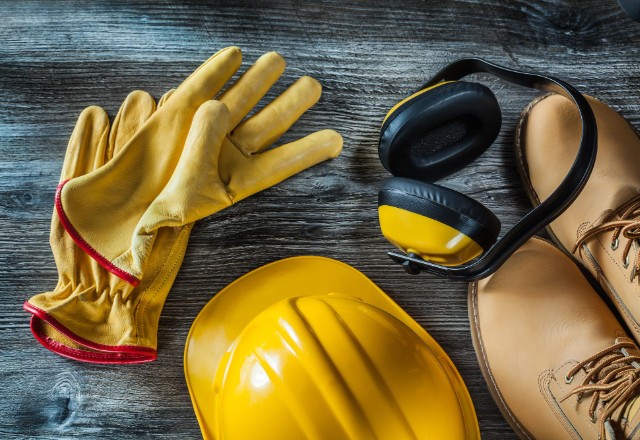
If you’ve noticed water stains or pools on your ceiling, it’s likely that you have a leaking flat roof. Acting quickly to repair the leak can help prevent further damage to your roof and home. In this step-by-step guide, we’ll cover the necessary steps for fixing a leaking flat roof and how to keep yourself and others safe during the repair process.
Removing Damaged Sections of Existing Membranes and Cleaning Surface Area
Flat roofs are are simple, easy to install, and relatively inexpensive. However, they can develop leaks over time, especially if they are not properly maintained. A leaking flat roof can cause water damage, mold growth, and other expensive problems that can affect the overall integrity of your building. Therefore, if you identify a leak in your flat roof, it is essential to repair it as soon as possible. In this article, we’ll explain how to remove damaged sections of existing membranes and clean the surface area in preparation for repairing a flat roof.
- The first step in repairing a flat roof is to identify the area where the leakage occurs. Once you have located the damaged area, you need to remove any debris and rust surrounding the damage. Use a roof rake or any other suitable tool to remove any debris that may have accumulated on the surface of the roof.
- After removing the debris, you should clean the surface area around the leakage. Start by wearing waterproof gloves and applying mineral spirits to the surface. Mineral spirits are an organic solvent that is used to dissolve and clean away substances such as oil, grease, and tar. Use a clean cloth to apply the mineral spirits, and ensure that you cover the affected section thoroughly. Let the surface dry for a few minutes before proceeding to the next step.
- Once the surface is dry, you can start repairing the flat roof. For patching a membrane, match the new membrane to the existing one and cut away the damaged sections. Make sure that the new membrane is compatible with the existing one, and that they are of the same material. This is important to ensure that the repair is long-lasting and effective.
- Next, spread roofing cement into the repair area. Roofing cement is a thick, viscous substance that is used to repair and patch flat roofing systems. Spread a generous amount of roofing cement over the damaged area, and ensure that the surface is smooth. Then, attach the patch by pressing it firmly onto the roofing cement. Make sure that the patch is well secured and that there are no air bubbles or gaps between the patch and the roofing cement.
- To fully seal the repair area and prevent water penetration, apply cement to the second patch, which should be 6 inches larger in all directions than the first patch, and smooth it evenly with the rest of the roof.
Repairing a leaking flat roof can be an easy and straightforward process if you follow the right steps. Identifying the leakage area, removing debris and rust, cleaning the surface with mineral spirits, patching the membrane, and adding additional layers of roofing cement will help you fix the problem quickly and effectively. Remember to also consider seeking assistance from a professional roofing contractor if the problem is extensive or beyond your expertise.
Applying New Layer(s) of Membrane and Sealing Edges with Cement
If the damage to your flat roof is extensive, you may need to apply new layer(s) of membrane and seal the edges with cement to fix the leakage. This process involves cutting a piece of roofing membrane that is slightly larger than the affected area and placing it over the damaged section.
- To start, make sure that the surface around the damaged area is clean and free of debris. Place the new piece of roofing membrane over the damaged area, ensuring that it lines up with the existing membrane.
- Next, spread roofing cement around the perimeter of the new membrane, sealing it to the existing membrane and the surrounding roof surface.
- After this, you can add another layer of roofing membrane and repeat the process of spreading roofing cement around the edges. Continue this process until the layers of roofing membrane have completely covered the damaged area. Make sure that each layer is slightly larger than the previous one to ensure complete coverage.
- Once you have applied all the necessary layers of roofing membrane, apply a final layer of roofing cement over the entire repair area. This will ensure that the edges are completely sealed and that water cannot penetrate the roof.
It is important to use high-quality roofing membrane and roofing cement for this repair to ensure that the fix is long-lasting and effective. This type of repair is best performed by a professional roofer, especially for extensive damage.
Call a professional or DIY?
When faced with a leaking flat roof, one must decide whether to call a professional roofer or tackle the repairs themselves. Each option has its own pros and cons, and it’s important to weigh them carefully before making a decision.
One of the major advantages of calling in a professional roofer is their experience and expertise. They have the knowledge and tools to diagnose the issue and repair it efficiently and effectively, saving homeowners time and frustration. Professionals are also likely to have access to roofing materials and tools that may not be readily available to DIYers.
On the other hand, hiring a professional can be expensive, and the cost of materials and tools may also add up. It’s crucial to weigh the cost of the professional’s time versus the cost of materials and tools to determine which option is more cost-effective.
For experienced DIYers, small spot repairs may be possible to fix on their own, but extensive flat roof damage may require the help of a professional. It’s important for DIYers to evaluate their own experience and comfort level with repairs to determine whether it’s safe and feasible for them to proceed with the repairs on their own.
If you’re still unsure whether to take a DIY approach or hire a professional roofer, there are several factors to consider. The extent of the damage, your own experience level, and comfort level with repairs, as well as the cost, should be taken into account. Additionally, it’s important to note that certain types of flat roofing materials may require specialized repair techniques that only a professional would be equipped to handle.
Ultimately, the decision to call a professional or take the DIY approach when facing a flat roof leak is a personal one that depends on the homeowner’s individual circumstances. Whatever the choice, it’s important to address the issue promptly to avoid further damage to your roof and home.
Conclusion
Fixing a leaking flat roof requires attention to detail, careful planning, and the right tools and expertise. Regular inspections and timely repairs are essential to prevent further damage to your roof and home. The national average cost of repairing a flat roof is approximately $500-$1,500 depending on the extent of the damage.
Hiring a professional roofer in your locality can provide an accurate estimate for repairing your flat roof. They possess the expertise to identify underlying issues that might be overlooked by an untrained observer, and have access to specialized repair methods and materials if required.
Don’t wait until it’s too late to address necessary flat roof repairs. Get in touch with Advance Roovfing LLC award-winning customer service team to find roofing professionals in your area and receive a quote today.



 509-201-4190
509-201-4190
